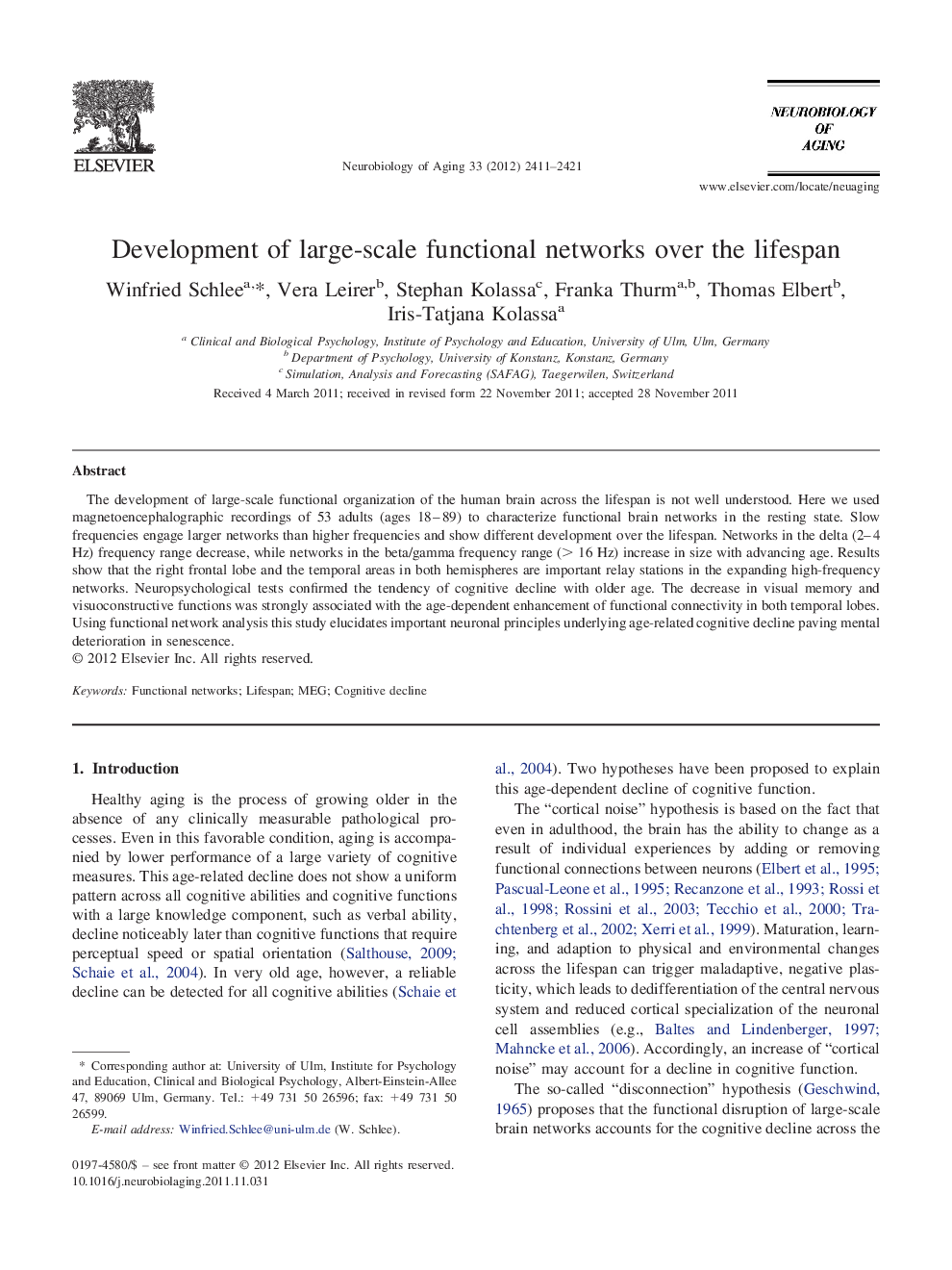| Article ID | Journal | Published Year | Pages | File Type |
|---|---|---|---|---|
| 6808189 | Neurobiology of Aging | 2012 | 11 Pages |
Abstract
The development of large-scale functional organization of the human brain across the lifespan is not well understood. Here we used magnetoencephalographic recordings of 53 adults (ages 18-89) to characterize functional brain networks in the resting state. Slow frequencies engage larger networks than higher frequencies and show different development over the lifespan. Networks in the delta (2-4 Hz) frequency range decrease, while networks in the beta/gamma frequency range (> 16 Hz) increase in size with advancing age. Results show that the right frontal lobe and the temporal areas in both hemispheres are important relay stations in the expanding high-frequency networks. Neuropsychological tests confirmed the tendency of cognitive decline with older age. The decrease in visual memory and visuoconstructive functions was strongly associated with the age-dependent enhancement of functional connectivity in both temporal lobes. Using functional network analysis this study elucidates important neuronal principles underlying age-related cognitive decline paving mental deterioration in senescence.
Related Topics
Life Sciences
Biochemistry, Genetics and Molecular Biology
Ageing
Authors
Winfried Schlee, Vera Leirer, Stephan Kolassa, Franka Thurm, Thomas Elbert, Iris-Tatjana Kolassa,
